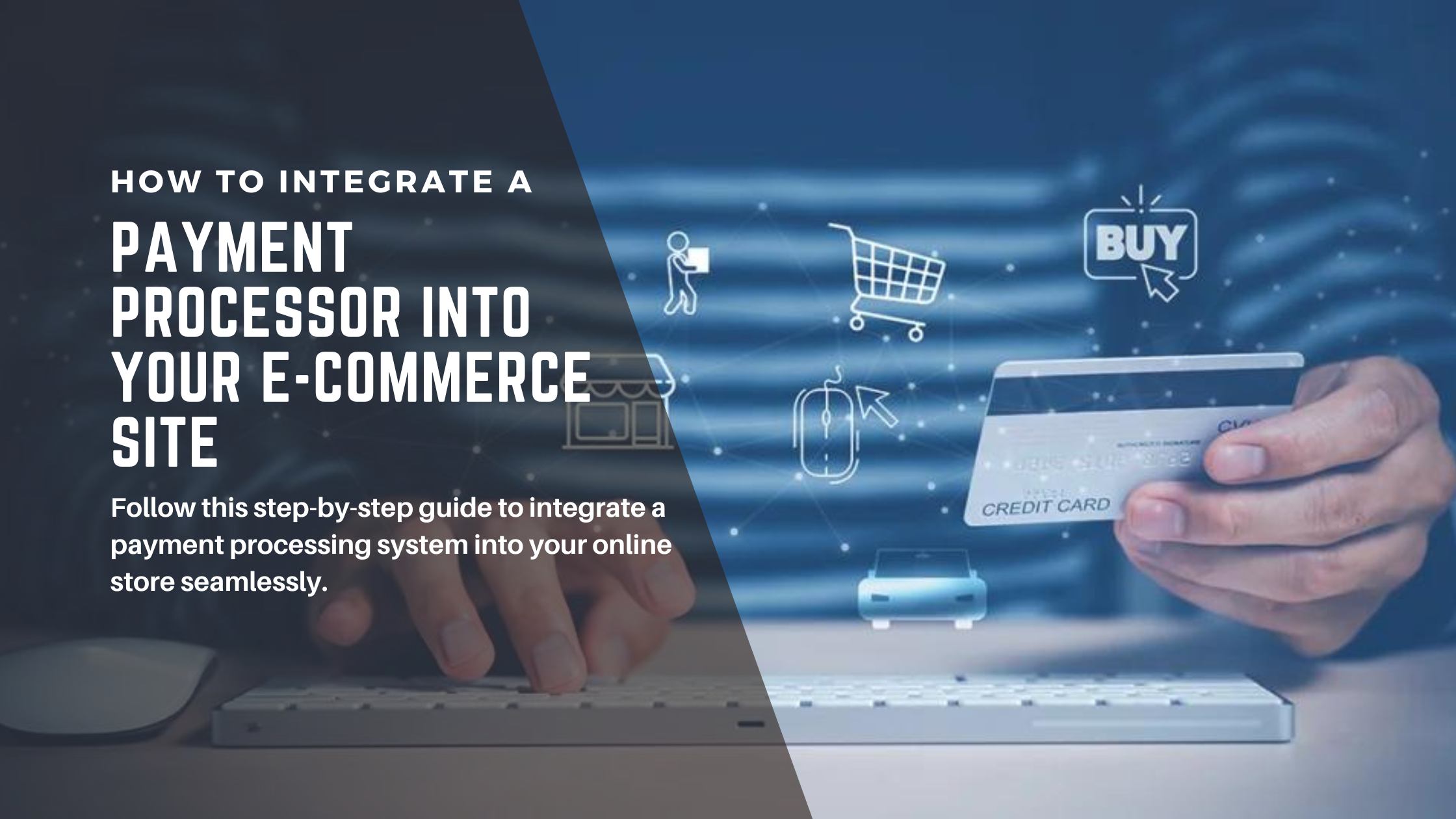December 4, 2025

-
Written by: Merchant Connect UK
- July 23, 2024

How to Integrate a Payment Processor into Your E-commerce Site
Integrating a payment processor into your e-commerce site is crucial for enabling secure and efficient transactions. Follow this step-by-step guide to seamlessly integrate a payment processing system into your online store.
Step 1: Choose the Right Payment Processor
1.1 Identify Your Business Needs
Before selecting a payment processor, consider your business requirements, such as:
- Transaction Volume: Estimate your monthly transaction volume.
- Target Markets: Determine if you need multi-currency support for international customers.
- Payment Methods: Decide which payment methods (credit/debit cards, digital wallets, etc.) you want to accept.
1.2 Compare Payment Processors
Research and compare different payment processors based on:
- Fees: Evaluate transaction fees, setup fees, and monthly charges.
- Security: Ensure the processor complies with PCI-DSS standards and offers fraud protection.
- Integration Options: Check if the processor supports integration with your e-commerce platform.
Popular payment processors include PayPal, Stripe, Square, and Authorize.Net.
Step 2: Set Up a Merchant Account
A merchant account is necessary for processing credit card transactions. Some payment processors, like PayPal and Stripe, offer integrated merchant accounts, simplifying the setup process.
2.1 Apply for a Merchant Account
If your chosen payment processor requires a separate merchant account, follow these steps:
- Research Providers: Choose a reliable merchant account provider.
- Submit Application: Provide necessary business information, such as your business name, address, and bank account details.
- Undergo Verification: The provider will verify your business details and approve your account.
Step 3: Create an Account with Your Payment Processor
Sign up for an account with your chosen payment processor by visiting their website and following the registration process. You will need to provide details about your business and verify your identity.
Step 4: Integrate the Payment Processor with Your E-commerce Platform
4.1 Use Built-In Integration Options
Many e-commerce platforms, such as Shopify, WooCommerce, and Magento, offer built-in integration options for popular payment processors. Follow these steps:
- Access Payment Settings: Log in to your e-commerce platform’s admin dashboard and navigate to the payment settings section.
- Select Payment Processor: Choose your payment processor from the list of available options.
- Enter API Credentials: Enter the API credentials provided by your payment processor. These credentials typically include an API key and secret key.
- Save Settings: Save the settings to complete the integration.
4.2 Use Custom Integration (For Custom Platforms)
If you are using a custom-built e-commerce site, you may need to integrate the payment processor manually:
- Access Developer Documentation: Visit the payment processor’s website and access their developer documentation.
- Install SDK/Library: Download and install the Software Development Kit (SDK) or library provided by the payment processor.
- Configure API Endpoints: Set up API endpoints for handling payment requests and responses.
- Test Integration: Use the payment processor’s sandbox environment to test the integration and ensure it works correctly.
- Move to Production: Once testing is complete, switch to the production environment and start processing live transactions.
Step 5: Configure Payment Options
After integrating the payment processor, configure the payment options available to your customers:
- Enable Payment Methods: Enable the payment methods you want to offer (e.g., credit/debit cards, digital wallets).
- Set Payment Rules: Configure rules for payment processing, such as minimum and maximum transaction amounts.
- Customize Checkout Experience: Customize the checkout page to ensure a seamless and user-friendly experience.
Step 6: Test the Payment Integration
Before going live, thoroughly test the payment integration to ensure it works correctly:
- Place Test Orders: Use test credit card numbers provided by the payment processor to place test orders.
- Verify Transactions: Ensure that transactions are processed correctly and that funds are deposited into your merchant account.
- Check Error Handling: Test how the system handles errors, such as declined payments or incorrect card details.
Step 7: Monitor and Optimize
Once your payment processor is live, continuously monitor and optimize the payment process:
- Monitor Transactions: Regularly review transaction reports and monitor for any issues or irregularities.
- Optimize Checkout Process: Gather customer feedback and optimize the checkout process to reduce cart abandonment rates.
- Stay Updated: Keep your payment processor and e-commerce platform updated with the latest security patches and features.
Conclusion
Integrating a payment processor into your e-commerce site is a critical step in providing a seamless shopping experience for your customers. By following this step-by-step guide, you can ensure a secure, efficient, and user-friendly payment process. At Merchant Connect, we offer comprehensive payment solutions tailored to your business needs. Contact us today to learn more about our payment processing services and how we can help you succeed in the digital marketplace.
We’ll Help You Start Accepting Payments
Contact us today to learn more about how we can meet all your payment processing needs.
Categories
- Banking(14)
- Industry Insights(37)
- Merchant Account(8)
- Online Payments(20)
Recent Post
November 24, 2025
Best Payment Gateway for High-Risk Startups: 2025 UK Guide
November 11, 2025
How AI Is Reducing Fraud in High-Risk Payment Processing
October 26, 2025
